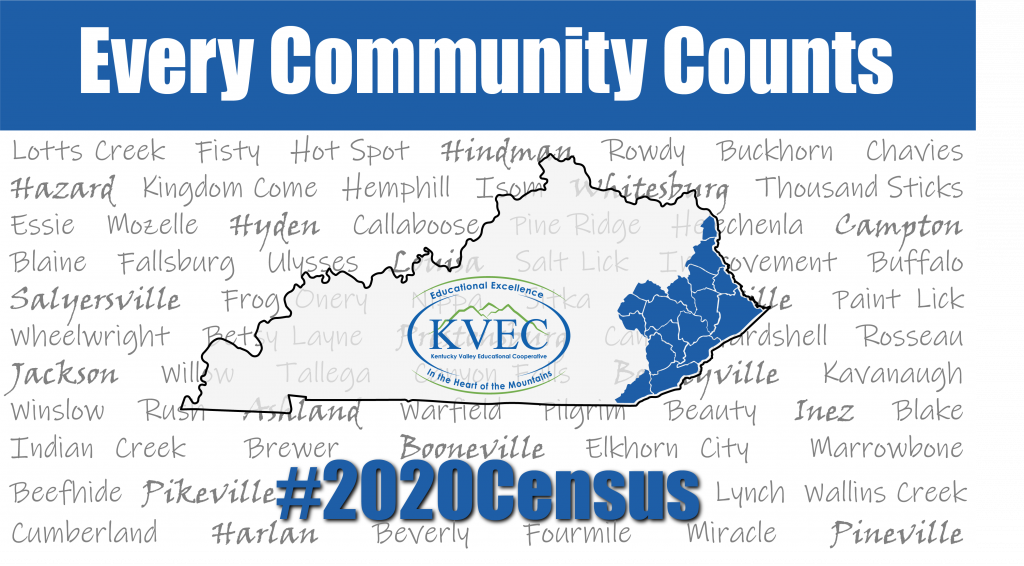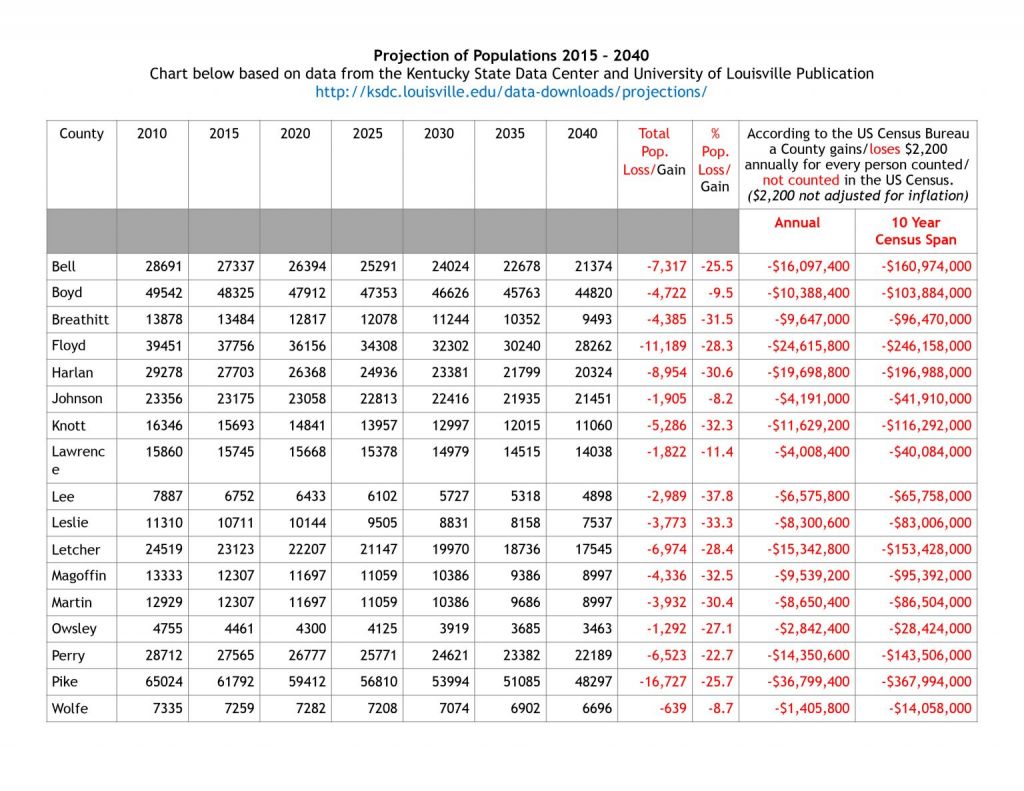“Every Community Counts”
Eastern Kentucky student leaders held a press conference in the Kentucky Capitol Rotunda at 11 a.m. on March 10 to discuss efforts they are making to promote the U.S. Census to ensure every person is counted. They called their initiative “Every Community Counts.”

The students stated they considered their work vital since The U.S. Census Bureau has designated eastern Kentucky as “hard to count” region because of a variety of cultural and economic factors: blended families where stepparents may be unsure of which children to account for, older residents, and people who may be distrusting of government employees, like those who go door-to-door collecting census information.
“We really believe we are an important resource to get the word out and ensure all are counted,” said Anne Hanson of Belfry High School. “We wish to share our strategies while bringing attention to the beginning of the census count on April 1.”
Members of the Kentucky Valley Educational Cooperative (KVEC) Student Senate representing 22 school districts began this initiative last fall working in their schools and communities, stated Ashland Independent High School senior Gavin Couture. They held the press announcement as a part of the KVEC “Innovation Celebration” which brought over 400 eastern Kentucky students and teachers to showcase nationally recognized innovations in learning on the Mezzanine and Rotunda.
The students said the economic and population downturns that have reshaped their area prompted their research and initiative. Their schools, nonprofit organizations, and census officials are enlisting them to put that knowledge to work, by ensuring that every person who calls their communities home is counted in the 2020 census.
Phelps High School senior Lora Patton explained the census is used to allocate funding for more than 300 federal programs, including many that are critical to schools, like the National School Lunch Program, Title I grant for high-poverty schools, and the Head Start early-education programs. Districts also use population data to set attendance boundaries and to plan for future enrollment growth—or loss.
The Student Senate work began October 23, 2019, during a Create-a-thon conducted by the U.S. Census Bureau in Pikeville. Junior senators from twenty-two high schools collaborated to identify demographics particular to our region, brainstorming strategies for media campaigns to not only educate the people of our region but to also persuade them to participate in the count. Students designed memes and other media products to share on social media to target those underreported populations in their schools and communities. As the Create-a-thon ended, students left with a plan to take back to their schools and a connection to the Census process to empower them within those plans.
The students displayed a large chart showing the potential loss of $2,200 per person not counted in the KVEC service region for their communities.

The students said their teams are capitalizing upon the school’s unique position as a cultural, educational, and social center for the community. They are sharing information about the Census at school events, ballgames, and school staff to inform their stakeholders about the Census.
“We are pleased that superintendents and principals also recognize the potential impact of this count in creating stronger schools and communities and are working with KVEC Student Senate teams.”
-Sarah Thompson (Johnson County High School, KVEC Student Senate)
They announced that some districts are utilizing the school-based “All Call” digital system that enables districts to communicate directly to parents and caregivers via phone, text or email) systems for advertising the Census on local government television stations to setting up “Census Information Stations” at ballgames and school events, students are getting the word out about what the Census is and is not. Families and community members should be expecting to receive reminders through the district call systems in their counties.
The students stated that they have learned that non-responses to the Census were not based on the ability to respond, but rather on the public’s misconceptions of the government’s use of Census statistics. We need to help our communities understand that over $675 billion dollars are at stake, the students explained, Knott County High School senior Brysen Honeycutt.
The KVEC Student Senators stated this loss in funding impacts not just their schools but funding of community centers, clinics, hospitals, and other public works such as road construction and maintenance. Another important facet of the Census is its role in determining representation in state and national government. A count of the persons living in a district is used to calculate the district’s boundaries as well as the number of representatives to the House, which means if people are not counted in the Census, then their voice in government is lost as well.
The students announced they are engaging in a region-wide media campaign through KVEC’s The Holler, a place-based social learning platform, to advertise and encourage the region to participate in the Census. The site can be visited at www.theholler.org.
During the fall and winter, Andrew Castle, KVEC Student Senate Lead, Kim Sergent, KVEC Social Studies Lead and Holler Engineers have visited Student Senators to consult and assist the student teams with their plans to inform and encourage their school communities regarding the Census.
April 1: Census Day is observed nationwide. By this date, every home will receive an invitation to participate in the 2020 Census. Once the invitation arrives, you should respond for everyone in your household in one of three ways: online, by phone, or by mail. When you respond to the census, you’ll tell the Census Bureau where you live as of April 1, 2020

